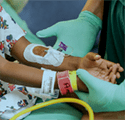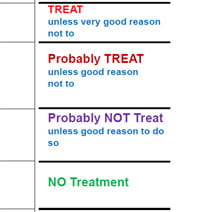Vascular Access Materials For Healthcare Professionals
Materials to Download
|
Reducing Risk of Harm From Extravasation |
|
 |
Venous Infusion Extravasation RiskAn estimate of risk for phlebitis or local tissue injury due to extravasation from any intravenous infusion device. |
 |
Upper Limb PICC Tip Target PositionHow to construct the target triangle. |
 |
Lower Limb PICC Tip Target PositionHow to access the desired landing zone. |
 |
Cincinnati Pediatric Intravenous Extravasation Assessment SystemMeasure swelling and arm length; chart results. |
 |
TLC PosterFor IV Safety: Touch, Look and Compare (in English and Spanish) | Poster in Arabic |
Journal Articles
- Reducing Risk of Harm From Extravasation: A 3-Tiered Evidence-Based List of Pediatric Peripheral Intravenous Infusates
- Quality Improvement Project to Reduce Infiltration and Extravasation Events in a Pediatric Hospital
About These Materials
Cincinnati Children’s has dramatically reduced harm to our patients since mid-2011 after implementing new procedures for medication use during intravenous therapy. We are sharing our processes and documents to help nurses and doctors across the world improve the care of children.
Our tool contains a continuous scale for estimating the volume of fluid extravasated, a three-category estimation of the potential local chemical and physical toxicity of the extravasated medication or agent, and a volume measurement that can be used for estimating the size of an extravasation anywhere on the body.
Initial tests suggest that unit nurses were quickly able to learn the scale and measure percentages of extravasations similar to results obtained by vascular access team nurses.
You may download, copy and use the documents on this page for noncommercial use, provided that the copies retain our copyright, trademark or other proprietary notice.
Advances in Vascular Access
> Download our poster
CHA Presentation
Neil Johnson, MD, medical director of the vascular access team at Cincinnati Children’s, presented “Preventing Intravenous Extravasation Injuries,” to the Children’s Hospital Association on Feb. 21, 2013.
> Download the document




